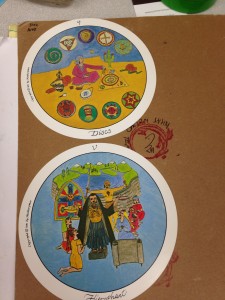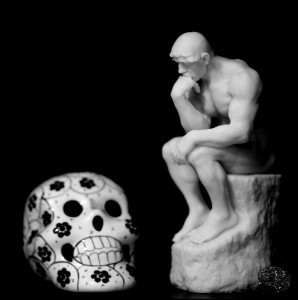
My report
I’m excited to say that while I did not meet my wordcount goal for the 6-week period, I made significant progress on my novel! This madcap narrative began as a story seed last summer and then grew into a novella project for the 2012 fundraiser. Now it wants to be a book. I also finally completed an emotionally challenging short story during a dry spot in the novelizing.
The sponsors who generously donated to CW gave me a boost of confidence. The money is for the workshop, but gratifying FEELS occur when other writers give in your name. So, thank you. If you’d like to hear about the project itself, read further. If not, please accept my heartfelt gratitude for your support of Clarion West.
About the book
Since Clarion West 2013, I’ve sold a number of short stories, and I’ve been ducking the long form. But this one kept bugging me until I let it in. I’ve kept fairly quiet about it so far, because it’s my first long form attempt (other than a manic dalliance with NaNoWriMo). However, it’s picking up steam and overcoming some of its shyness. A measure of that steam comes from the extraordinary generosity of Mark Teppo, who offered to listen to my pitch back in March at the Rainforest Writers Retreat 2013 and gave me useful, hard-hitting feedback about structure and believability.
He also gave a cool talk called “Nuns With Guns,” in which he asked, “Are characters fighting you because they know the scene they’re in rings false? Ask yourself if there’s a simpler way. What if they fail? How badly could it go? Are you having fun?”
Well, yes, I’m having fun.
The Pitch
Myths to Live By is a post-Event novel that follows the travels of Bailey, a dedicated scientist and Asema, an increasingly dangerous woman she’s sworn to protect, through an apocalyptic landscape populated by motorcycle stuntwomen, talking animals, hippies, wasteland demagogues and tree-dwelling Amazons. Between the two of them, Bailey and Asema hold the power to save the world or utterly destroy it.
Would you read that? I kinda think I would.
Where did THAT come from?
At Clarion West, one of my instructors was the formidable Maureen McHugh, who advised us to write our obsessions. I think it’s a fair representation to say that she credits the success of her award-winning novel China Mountain Zhang to this principle. Rather than trying to guess what publishing markets want, go with the story that only you can tell, the one that’s eating at you and incorporates subjects about which you care the most. A combination of two of McHugh’s obsessions formed the basis of her novel and created space for risk-taking and invention, producing a unique and exciting narrative.
My obsessions, apparently, are tricksters, nanotech, intentional community, sex, and motorcycles. But it started with “trickster plus nanotech.” It grew and shifted as influences other than these folded into the early novella and gradually the novel outline.
When I’m in the thick of creative process, my writer-brain does a katamari thing, and everything I roll past sticks to the story I working on. Sometimes I fight the katamari impulse, and other times it’s serendipitous. I was reading Joseph Campbell’s Myths to Live By when I started the project. The book is classic but problematic; I purposefully distanced myself from it by giving my ragged paperback (purchased at a used bookstore in Seattle during my stint at Clarion West) to a high school student who expressed growing interest in Campbell’s work. I read Fight Club for the first time, and found Palahniuk’s eye for violence and its motives, satisfactions and consequences intriguing. I fell headfirst into Lewis Hyde’s Trickster Makes This World, and began to see connections between aspects of characterization I’d been struggling with in the novella. The main characters, who had felt flat and resistant, like they do when they’re bored with shouldering the weight of the author’s obsessions, sprang upright. They pushed off the packs they’d been carrying for me and began intruding into my thoughts when I wasn’t writing. They started arguing with each other. It was exhilarating.
The Outcome
Now, I’d be lying if I tried to claim this all happened during the Write-a-thon; it didn’t. I’ve been wrestling with this story all year. Writers I trust told me to keep going when I fretted about my novel “jumping the shark” right in front of my eyes. A few folks even said, ah, yes, that’s it.
So, here I go, off into the wasteland. Thank you for all your support, and wish me luck!
 I attended Rainforest Writers’ Village for the seventh(!) year in a row this February. I managed to finish a bothersome short story draft, revise two stories, AND I made a brainy breakthrough on a third story with which I’ve been struggling. Nancy Kress presented a great talk on endings, which gave me food for writerly thought. A lovely snowfall graced the second day of the retreat. But for me, the feature was the chance to spend time with wonderful people, like these folks.
I attended Rainforest Writers’ Village for the seventh(!) year in a row this February. I managed to finish a bothersome short story draft, revise two stories, AND I made a brainy breakthrough on a third story with which I’ve been struggling. Nancy Kress presented a great talk on endings, which gave me food for writerly thought. A lovely snowfall graced the second day of the retreat. But for me, the feature was the chance to spend time with wonderful people, like these folks.




